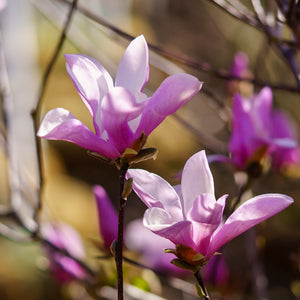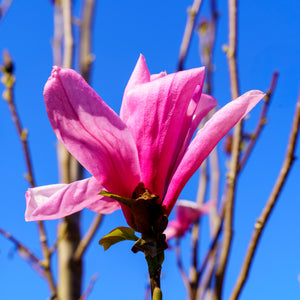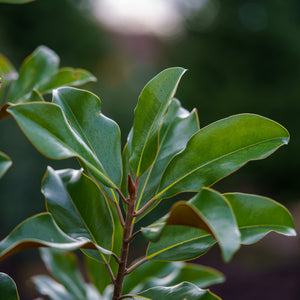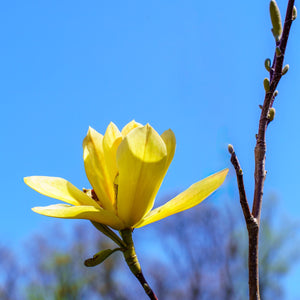The Magnolia Guide
Magnolias (genus Magnolia) are among the most admired flowering trees and shrubs in the world, known for their bold blossoms, architectural structure, and rich horticultural history. With varieties ranging from deciduous spring bloomers to broadleaf evergreens, magnolias offer beauty, fragrance, and seasonal interest for a wide range of garden styles and climates. Their showy flowers, which may appear before the leaves emerge, create a stunning focal point in spring, while evergreen types provide year-round elegance.
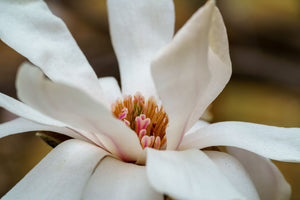
About
The Magnolia genus is a diverse group comprising over 200 species and numerous cultivars native to North America, Central America, and Asia. These plants vary in size, habit, bloom time, and leaf type, giving gardeners a broad palette to choose from.
Among the most widely grown species is Magnolia x soulangeana, or saucer magnolia, which produces large, tulip-shaped flowers in early spring in shades of white, pink, and purple. Cultivars like 'Rustica Rubra' and 'Verbanica' are standout performers. Magnolia stellata, or star magnolia, is another early bloomer with narrow-petaled, star-shaped flowers; selections like 'Royal Star' and 'Centennial' are particularly beloved for their compact form.
Magnolia grandiflora, native to the southeastern United States, is an iconic evergreen tree with glossy green leaves and large, creamy white, lemon-scented flowers. Cultivars like 'Bracken’s Brown Beauty', 'Little Gem', and 'Edith Bogue' offer improved cold hardiness and more compact habits, making them adaptable beyond their native range.
Deciduous magnolias like Magnolia virginiana (sweetbay magnolia) and Magnolia acuminata (cucumber tree) are also important landscape species. Hybrid introductions such as ‘Elizabeth’, ‘Butterflies’, and ‘Yellow Bird’ bring unique yellow-flowering options to northern gardens.
Hybrid varieties like the "Little Girl Series"—including 'Ann', 'Betty', and 'Jane'—were developed for cold-hardiness and extended blooming seasons. Other notable crosses, like Magnolia x loebneri 'Leonard Messel' and 'Merrill', combine cold tolerance, abundant blooms, and graceful branching.
Magnolias are often associated with southern gardens, but with the wide range of cold-hardy hybrids now available, they can be enjoyed across much of the United States. Their large, fragrant flowers are attractive to pollinators and offer unmatched visual impact.
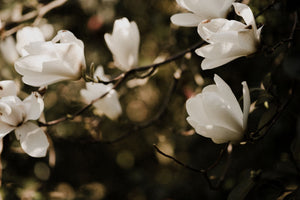
PLANTING
Proper planting ensures magnolias establish strong root systems and thrive for decades.
USDA Hardiness Zones: Depending on species and cultivar, magnolias grow in Zones 4–10. Evergreen types generally prefer warmer zones (7–10), while deciduous varieties and hybrids may be hardy to Zone 4.
Soil: Magnolias prefer rich, well-drained, slightly acidic soil. Amend heavy clay or overly sandy soils with compost or organic matter to improve structure and nutrient content.
Sunlight: Most magnolias perform best in full sun to partial shade. Southern species like Magnolia grandiflora tolerate more sun, while early-flowering types may benefit from some afternoon shade in hot climates.
Watering: Keep soil evenly moist during the first few years. Once established, magnolias are moderately drought-tolerant but should be watered deeply during extended dry periods.
Spacing: Space magnolias according to their mature size. Large tree forms like Magnolia grandiflora should be given 20–40 feet of room, while smaller selections like Magnolia stellata and Magnolia x ‘Jane’ can be planted 10–15 feet apart.
Planting Time: Early spring or fall is ideal for planting magnolias. Container-grown plants can be installed in summer with proper watering.
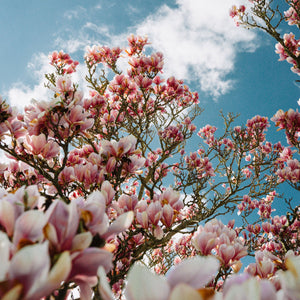
CARE
Watering: Young magnolias require consistent moisture. Deep watering encourages root development. Mature plants can tolerate dry spells but prefer regular watering in extreme heat.
Fertilizing: Apply a slow-release, balanced fertilizer in early spring before new growth begins. Avoid excessive feeding, which can reduce flowering.
Pruning: Magnolias need minimal pruning. Prune only to remove dead or crossing branches, or to shape young plants. The best time to prune is immediately after flowering for spring-blooming types and in late winter for evergreens.
Pests and Diseases: Magnolias are generally low-maintenance but may face issues such as scale insects, leaf spot, or powdery mildew. Maintain plant health through proper watering, spacing, and air circulation.
Mulching: Apply a 2–3 inch layer of mulch around the base to conserve moisture, suppress weeds, and moderate soil temperatures. Keep mulch several inches away from the trunk.
HOW TO USE
Focal Point: With their bold flowers and sculptural form, magnolias are ideal focal point trees. Varieties like Magnolia x soulangeana or Magnolia grandiflora ‘Bracken’s Brown Beauty’ create show-stopping displays in spring and summer.
Specimen Trees: Use larger magnolias in open lawns or prominent areas where their full form and flowering can be appreciated. The large white blooms of Magnolia grandiflora or the pastel tones of hybrids like ‘Elizabeth’ are perfect for this purpose.
Foundation Plantings: Compact forms such as Magnolia stellata or Magnolia virginiana 'Perry Paige' are excellent near homes and patios, offering fragrance and manageable size without overwhelming the space.
Woodland and Naturalistic Gardens: Deciduous magnolias pair beautifully with native understory trees and shade-tolerant shrubs. Use with dogwoods, redbuds, ferns, and spring ephemerals for layered interest.
Pollinator Gardens: Magnolia flowers provide early nectar for bees and beetles. Combine with hellebores, lungwort, and other early bloomers to support wildlife throughout the spring.
Mixed Borders: Include magnolias in mixed borders alongside hydrangeas, viburnums, and evergreen hollies to create seasonal interest and structural diversity.
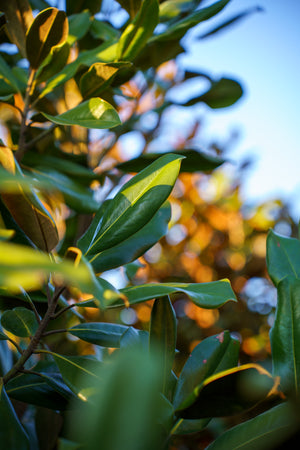
Common Questions
When do magnolias bloom? Bloom time varies by species. Some, like Magnolia stellata and Magnolia x soulangeana, bloom in early spring before the leaves emerge. Others, like Magnolia grandiflora and Magnolia virginiana, bloom in late spring to early summer.
How fast do magnolia trees grow? Growth rate depends on species. Some, like Magnolia acuminata, grow 1–2 feet per year, while others, like Magnolia stellata, grow more slowly. Most hybrids have moderate growth rates.
How to prune a magnolia tree? Prune lightly after flowering to remove deadwood or shape young trees. Avoid heavy pruning, which can disrupt the tree’s natural form and reduce flowering.
How big do magnolia trees get? Large species like Magnolia grandiflora can reach 60–80 feet tall. Smaller species and hybrids range from 10 to 30 feet tall and wide, depending on variety.
How to plant a magnolia tree? Dig a hole twice as wide as the root ball and just as deep. Position the tree so the top of the root flare is level with the soil surface. Backfill with enriched soil and water deeply.
How to propagate a magnolia? Propagation is typically done via softwood cuttings or layering in summer, or grafting in winter. Some species can be grown from seed but may take years to flower.
What does a magnolia look like? Magnolias vary in form, but all have distinctive large flowers. Deciduous types often have smooth, gray bark and rounded or upright canopies. Evergreen types have glossy leaves and a pyramidal shape.
Do magnolia trees lose their leaves? Deciduous magnolias lose their leaves in fall. Evergreen species, such as Magnolia grandiflora, retain their foliage year-round.
Conclusion
Magnolias are iconic ornamental trees that add elegance, structure, and unforgettable bloom displays to the landscape. With options for nearly every climate and garden size, from compact shrubs to towering evergreens, magnolias remain a timeless and rewarding choice for gardeners. Their seasonal beauty, fragrant flowers, and graceful presence ensure they will always hold a special place in the garden.
The Magnolia Collection
Sold Out
Sold Out
Sold Out
Sold Out

